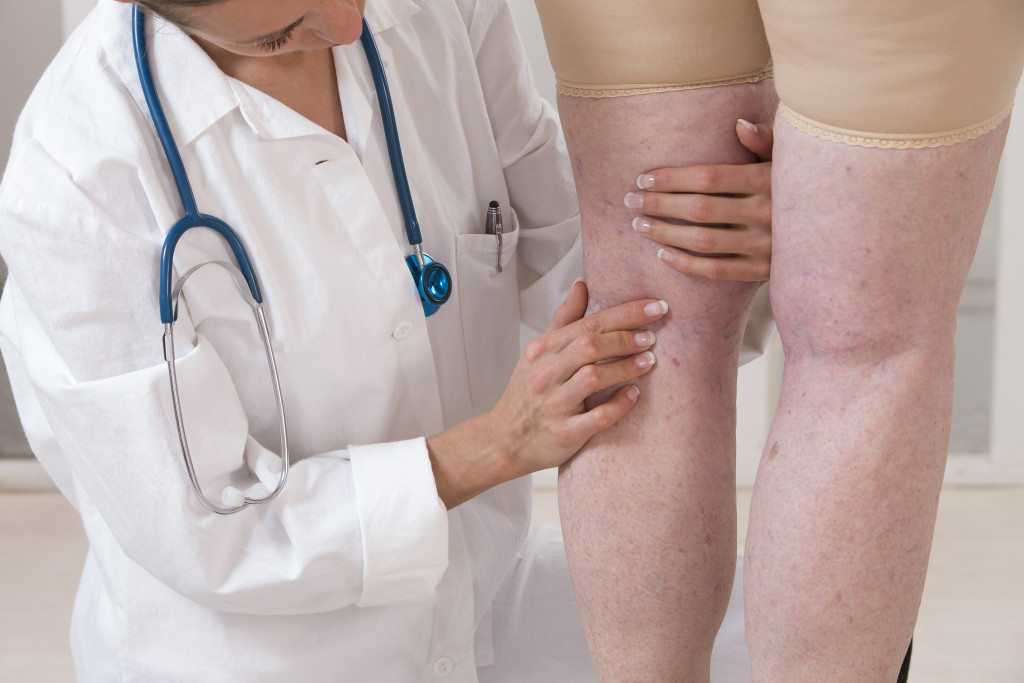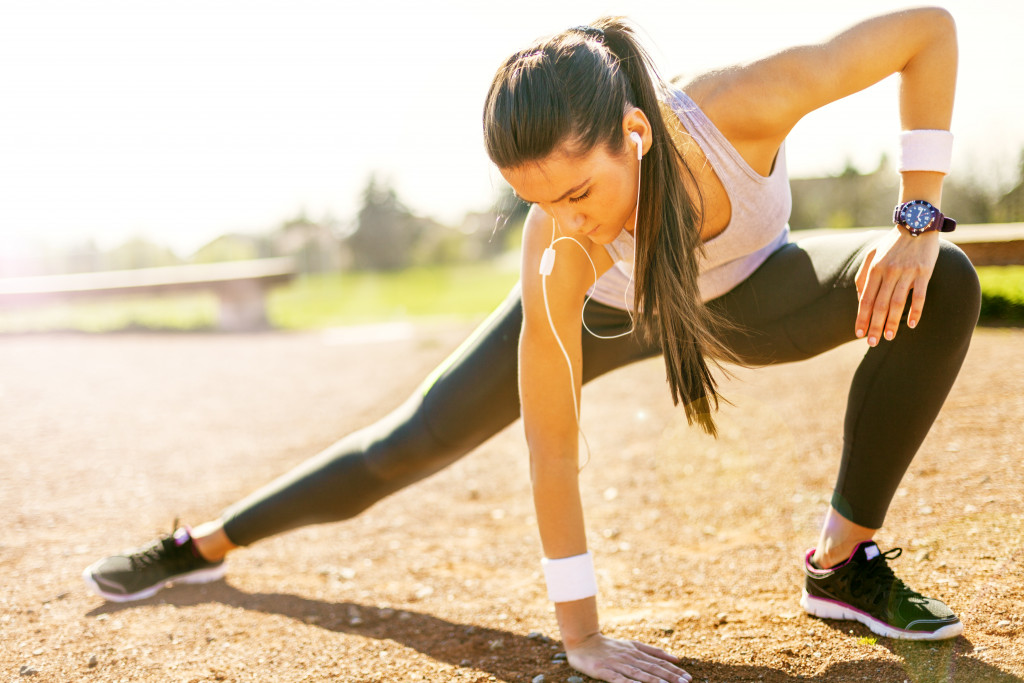- Compression stockings and garments can reduce swelling, improve blood circulation, and alleviate discomfort caused by varicose veins.
- Minimally invasive procedures such as sclerotherapy, EVLT, and RFA can help remove visible varicose veins and reduce pain.
- Incorporating healthy lifestyle habits such as regular exercise and avoiding prolonged periods of standing can prevent varicose veins from forming.
- Vein ligation and stripping is a surgical procedure used for severe cases, while ambulatory phlebectomy removes sections of the vein.
- To prevent the development of varicose veins, elevate legs above the heart when possible, and maintain good leg hygiene.
Varicose veins are a source of frustration and embarrassment for many who struggle with them. Women, in particular, tend to feel self-conscious when wearing shorts, skirts, or swimsuits, worrying that these unsightly veins will diminish their overall appearance.
Although varicose veins are usually nothing more than a cosmetic concern, they can cause discomfort in some individuals. Numbness, pain, and swelling are common symptoms of varicose veins, which can significantly decrease the quality of life.
Additionally, research suggests that untreated varicose veins may progress into a more severe venous disease requiring surgery. This is why finding adequate and appropriate strategies for treating and preventing varicose veins is essential.
Thankfully, various treatments can improve the appearance of varicose veins and make them less noticeable, even disappearing entirely in some cases. This post will explore some of the most effective treatments for varicose veins that will help keep your legs looking great and give you the confidence to take every step.
Non-invasive Treatments
For those looking for non-surgical options, several non-invasive treatments are available.
Compression Stockings and Garments
Compression stockings and garments are some of the most accessible and affordable varicose veins treatments. These specialized garments apply pressure to your legs, reducing swelling, improving blood circulation, and alleviating discomfort caused by varicose veins.
Lifestyle Changes and Self-Care Practices
Incorporating healthy lifestyle habits such as regular exercise, maintaining a healthy weight, and avoiding prolonged periods of sitting or standing can also help reduce the symptoms of varicose veins.
Minimally Invasive Procedures
Minimally invasive procedures are simple treatments that can be performed in the physician’s office with little to no downtime.
The following are some of the minimally invasive procedures that can help remove varicose veins:
Sclerotherapy
Sclerotherapy is another popular treatment for varicose veins that involves injecting a solution called sclerosant directly into the affected vein. Sclerotherapy, a highly effective treatment, uses a sclerosant to destroy the vein’s inner lining.
This process causes the vein to collapse and gradually fade away. Typically performed in a doctor’s office, sclerotherapy is commonly recommended for treating minor to medium-sized varicose veins.
Endovenous Laser Treatment (EVLT)
Endovenous Laser Treatment (EVLT) involves inserting a thin laser fiber into the affected vein, which heats it, causing it to collapse. The procedure typically takes an hour and is minimally invasive, and no scarring occurs. EVLT is an effective treatment for more prominent varicose veins.
Radiofrequency Ablation (RFA)
Radiofrequency Ablation (RFA) is another minimally invasive treatment that uses a catheter inserted into the affected vein, emitting laser energy to seal the vein shut.
The main advantage of RF Ablation is that it is effective for large veins and takes less time for patients to recover than vein stripping and ligation. The procedure is quick and safe, with minimal risk of complications.

Surgical Interventions
In some severe cases, surgical interventions may be necessary to remove varicose veins. The following are two commonly performed surgical procedures for varicose veins:
Vein Ligation and Stripping
Vein ligation and stripping is a surgical treatment for varicose veins that involves removing the affected vein from the leg. The procedure is performed under general anesthesia and requires a few weeks to recover fully.
This technique is generally only recommended for severe cases of varicose veins and is becoming less popular with the advancements in less-invasive techniques.
Ambulatory Phlebectomy
Ambulatory Phlebectomy is a procedure performed under local anesthesia and involves small incisions to remove sections of a damaged vein. The incisions are typically tiny, and the majority of patients can resume regular activity within a few days.
Lifestyle Tips for Varicose Vein Prevention
Adopting a healthy lifestyle is one of the best ways to prevent varicose veins from forming. This includes:
Proper Leg Elevation and Avoiding Prolonged Sitting or Standing
Another critical strategy for preventing varicose veins is to prioritize proper leg elevation. You should elevate your legs above your heart whenever possible, especially after long periods of sitting or standing.
When you sit or stand for extended periods, blood can pool in your legs, leading to swelling and inflammation. Elevating your legs helps to promote circulation and reduce pressure on your veins.
Avoidance of High-Heeled Shoes and Tight Clothing
Wearing high-heeled shoes and tight clothing can put added pressure on your veins. Over time, this pressure can cause damage to your blood vessels, leading to varicose veins.
For this reason, it is recommended that you avoid high-heeled shoes whenever possible and opt for supportive footwear that promotes good circulation.
Similarly, avoid wearing tight clothing that restricts movement or puts pressure on your legs.
Maintenance of Good Leg Hygiene and Skincare
Maintaining good leg hygiene and skin care is essential, like washing your legs regularly and using moisturizer to keep your skin hydrated and healthy.
Avoid using products that contain harsh chemicals or fragrances that can irritate your skin. In addition, try incorporating some gentle massage techniques into your skincare routine to help promote circulation and reduce inflammation.

Varicose veins can negatively impact one’s quality of life, but effective treatments can prevent them from worsening or even remove them entirely.
Compression stockings, lifestyle changes, and minimally invasive and surgical treatments have all been found to provide varicose vein relief, depending on the severity of the condition.
Patients experiencing symptoms of varicose veins are encouraged to speak with their healthcare provider to determine which treatment option is best for them to enhance their appearance, improve their symptoms, and restore their confidence.
